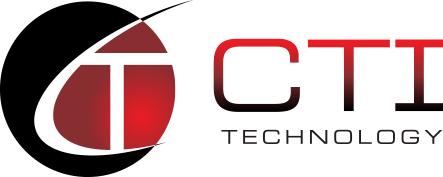The ROI of Managed IT During Economic Uncertainty: Maximize Value & Resilience
Economic uncertainty creates a challenging paradox for businesses: technology remains critical for operations, yet budgets face mounting pressure. Companies must maintain IT excellence while controlling costs, leading many to question whether managed IT services deliver measurable value during turbulent times.
Research from Mordor Intelligence shows that managed service providers can reduce IT costs by 25-45% while boosting efficiency by up to 65%, transforming unpredictable IT expenses into strategic investments. This shift becomes particularly valuable when every dollar must demonstrate clear returns.
The key lies in understanding that managed IT transforms your technology from a cost center into a competitive advantage. Rather than cutting IT spending during economic downturns, smart organizations prioritize strategic IT investments that deliver both immediate savings and long-term resilience.
Key Takeaways
- Managed IT services convert unpredictable technology costs into fixed operational expenses with proven ROI
- Proactive monitoring and maintenance prevent costly downtime while strengthening cybersecurity during vulnerable periods
- Strategic IT partnerships enable scalable growth and operational flexibility essential for navigating economic uncertainty
Understanding Economic Uncertainty and Its Impact on IT
Economic uncertainty creates significant pressure on IT budgets as companies face reduced revenue streams and increased operational costs. Organizations typically respond by delaying technology investments, reducing staff, or postponing critical infrastructure upgrades.
How Economic Fluctuations Affect IT Investments
During economic downturns, IT investments are often among the first to face cuts in corporate budgets. Companies view technology spending as discretionary rather than essential, leading to delayed software purchases and hardware refreshes.
Investment Priorities Shift when revenues decline. Your organization may postpone cloud migrations, cybersecurity upgrades, or digital transformation initiatives. These delays can create long-term vulnerabilities in your infrastructure.
Market volatility directly impacts your technology planning cycles. Projects with 12-18 month timelines become difficult to justify when quarterly earnings remain unpredictable.
Capital expenditures typically receive more scrutiny than operational expenses during periods of uncertainty. Your finance team may require additional ROI justification for server purchases, network upgrades, or enterprise software licenses.
Research indicates that economic policy uncertainty has a heightened impact on corporate decision-making in today’s interconnected business environment.
Challenges Facing Businesses in Uncertain Times
Your IT department faces mounting pressure to maintain service levels while working with constrained resources. Staff reductions often coincide with increased demands for technology from remote work and digital operations.
Budget constraints force difficult decisions between maintaining legacy systems and investing in modern infrastructure. You may need to choose between essential security updates and productivity-enhancing tools.
Skilled IT professionals become increasingly difficult to retain when budgets are tightened. Your team may experience higher turnover as employees seek more stable opportunities elsewhere.
Vendor relationships become strained when payment terms extend or contract renewals face delays. Critical support agreements may lapse, leaving your systems vulnerable during already challenging periods.
The complexity of managing hybrid work environments adds operational burden without proportional budget increases. Your infrastructure must support distributed teams while keeping costs flat or decreasing.

Consequences of IT Budget Reductions
Reducing IT spending creates cascading effects throughout your organization that extend far beyond the technology department. Security vulnerabilities increase when patches, updates, and monitoring tools face budget cuts.
System downtime becomes more frequent and costly when preventive maintenance gets deferred. Your business operations suffer from aging hardware that hasn’t received timely replacement or upgrades.
Data backup and recovery capabilities may deteriorate without proper investment in redundant systems and disaster recovery planning. A single system failure could result in devastating data loss.
Employee productivity declines when outdated software and slow systems impede daily workflows. Your team spends more time troubleshooting technical issues instead of focusing on core business activities.
Compliance risks multiply when regulatory software updates and security certifications are deferred due to budget constraints. Your organization may face penalties or legal exposure from outdated compliance systems.
Competitive disadvantage arises when competitors who maintain their IT investments gain market share through superior digital capabilities and customer experiences.
Defining ROI for Managed IT Services
Return on investment calculations for managed IT services encompass both direct cost savings and indirect value creation through enhanced efficiency and risk mitigation. The measurement framework encompasses traditional financial metrics alongside operational performance indicators that reflect the full scope of benefits provided by managed service providers.
What Does ROI Mean in an IT Context?
ROI in managed IT services represents the financial benefit you gain from outsourcing technology operations compared to maintaining internal capabilities. Return on investment measures the profitability of using managed services versus internal IT management by comparing financial benefits to costs incurred.
Your IT ROI calculation extends beyond simple cost reduction. It encompasses productivity gains from reduced downtime, security improvements that prevent costly breaches, and strategic advantages from accessing specialized expertise.
The formula considers both tangible returns, such as labour cost savings, and intangible benefits, including improved employee productivity. When you partner with a managed service provider, your ROI reflects the value of enterprise-level capabilities without enterprise-level overhead.
Key Metrics Used to Measure Return on Investment
Cost Reduction Metrics form the foundation of your ROI calculation. These include salary savings from reduced IT staffing, lower software licensing costs through volume purchasing, and decreased hardware expenses through optimized infrastructure management.
Operational Efficiency Indicators measure performance improvements:
- System uptime percentage – tracks availability gains
- Mean time to resolution – measures faster problem solving
- Help desk response times – shows support efficiency
- Security incident frequency – indicates risk reduction
Productivity Measurements capture indirect value creation. Employee hours saved through automated processes, reduced IT-related work interruptions, and faster system performance all contribute to your overall return.
Research shows managed service providers can cut IT costs by 25-45% while boosting efficiency by up to 65%. These measurable improvements directly impact your bottom line calculations.
Hidden Costs and Value Factors
Opportunity Costs represent significant hidden value in your ROI assessment. When your internal team focuses on strategic initiatives instead of routine maintenance, you gain competitive advantages that traditional calculations miss.
Risk Mitigation Value encompasses the avoided costs resulting from potential security breaches, compliance violations, and system failures. Cybersecurity incidents can cost hundreds of thousands in recovery expenses and lost productivity.
Scalability Benefits provide flexible cost structures during economic uncertainty. You can adjust service levels without hiring or firing internal staff, maintaining operational efficiency regardless of business fluctuations.
Knowledge Transfer Value eliminates training costs and reduces the impact of turnover. Your managed service provider maintains expertise continuity, while your internal staff turnover creates knowledge gaps and replacement expenses.
Compliance Cost Avoidance through expert regulatory management prevents costly violations and audit failures that could impact your business operations and reputation.
Cost Control Strategies with Managed IT Providers
Businesses achieve significant cost reductions by restructuring IT expenses from unpredictable capital investments to fixed operational costs. Managed IT services can reduce IT costs by 25-45% while providing improved budget visibility and optimized resource allocation.
Transitioning from Capital Expenditure to OpEx Models
Moving from capital expenditure to operational expenditure transforms your financial planning capabilities. Instead of large upfront hardware purchases that depreciate quickly, you pay predictable monthly fees that align with actual usage.
This shift eliminates the need for major server purchases, software licenses, and infrastructure investments. Your organization avoids the financial burden of maintaining aging equipment and the costs of unexpected replacements.
OpEx benefits include:
- Predictable monthly IT budgets
- No depreciation concerns
- Reduced tax complexity
- Improved cash flow management
The operational expenditure model provides immediate access to enterprise-grade technology without the capital investment. You can scale resources up or down based on business needs rather than being locked into fixed infrastructure capacity.
Identifying and Eliminating Underutilized Tools
Many organizations pay for software licenses and services that employees rarely use. Managed IT providers conduct comprehensive audits to identify these inefficiencies and eliminate unnecessary expenses.
Standard underutilized tools include redundant software subscriptions, unused cloud storage, and overlapping security solutions. Your MSP analyzes usage patterns and recommends opportunities for consolidation.
Typical savings areas:
- Duplicate software licenses
- Unused cloud services
- Redundant backup solutions
- Unnecessary security tools
MSPs track software utilization rates and license compliance to prevent both overspending and audit penalties. This ongoing monitoring ensures you only pay for tools that deliver measurable business value.
Budget Flexibility and Prioritization
Managed IT services offer predictable monthly pricing, making IT budgets more manageable during economic uncertainty. This predictability allows you to allocate resources to strategic initiatives rather than emergency repairs.
Your MSP helps prioritize technology investments based on their business impact and potential ROI. Critical security updates receive immediate attention, while nice-to-have features wait for more favourable economic conditions.
Budget control features:
- Fixed monthly costs
- Transparent pricing models
- Priority-based service levels
- Scalable resource allocation
IT budgets become strategic tools rather than reactive expenses. You can plan technology investments months in advance and adjust service levels based on business performance and market conditions.
Productivity and Business Continuity Advantages
Managed IT services transform operational stability by eliminating system failures that halt work, maintaining critical functions during crises, and enabling flexible work arrangements. These improvements directly impact your bottom line by reducing downtime costs and maintaining sustained productivity levels.
Reducing Lost Productivity and Avoiding Downtime
System failures cost your business far more than repair expenses. Every minute of downtime translates to lost revenue, frustrated customers, and delayed projects that compound over time.
Managed IT services offer proactive monitoring, identifying potential issues before they lead to outages. Your MSP tracks server performance, network traffic, and application health around the clock.
Automation plays a crucial role in preventing lost productivity. Automated patch management keeps your systems secure and stable without manual intervention. Automated backups ensure data protection without employee time investment.
The financial impact is measurable. Research indicates that managed IT services can increase efficiency by up to 65% while reducing IT costs by 25-45%. These efficiency gains stem from fewer interruptions and faster resolution of problems.
Predictive maintenance identifies failing hardware before it crashes. Your team continues working while replacements arrive, rather than waiting for emergency repairs during critical business hours.
Ensuring Reliable Business Continuity During Disruptions
Economic uncertainty brings unexpected challenges that can disrupt operations. Business continuity requires preparation for scenarios ranging from natural disasters to cyberattacks to supply chain interruptions.
Managed IT services are crucial for business continuity planning because they provide comprehensive disaster recovery strategies. Your MSP creates detailed backup procedures, alternate communication channels, and recovery timelines.
Key continuity elements include:
- Data backup and recovery systems that maintain multiple copies of critical information
- Redundant network connections that switch automatically when primary systems fail
- Cloud-based applications that remain accessible from any location
- Security protocols that protect against cyber threats during vulnerable periods
Managed service providers specialize in proactive IT management, utilizing tools and expertise to navigate uncertain times. They test recovery procedures regularly to ensure they work when needed.
Your business maintains operations while competitors struggle with outages. This advantage becomes particularly valuable during economic stress when every lost sale matters.
Role of Managed IT in Supporting Remote and Hybrid Work
Remote and hybrid work arrangements require a robust technology infrastructure that many businesses lack internally. Your employees need secure access to company systems from various locations and devices.
Managed IT providers configure VPN connections, cloud-based collaboration tools, and mobile device management systems. These solutions maintain productivity regardless of where your team works.
Automation streamlines remote work processes through:
- Automated software updates across all devices
- Self-service password resets that reduce help desk tickets
- Automated security scanning for remote connections
- Cloud-based file synchronization that keeps documents current
Managed IT services transform technology into a strategic asset rather than a constant concern. Your remote workers access the same tools and performance levels as office-based employees.
Security remains paramount for distributed teams. Your MSP implements endpoint protection, monitors suspicious activity, and maintains compliance standards across all work environments.
The result is sustained productivity that adapts to changing work patterns without sacrificing security or performance standards.
Security, Compliance, and Risk Mitigation Benefits
Managed IT services provide critical security infrastructure that protects against rising cyber threats while maintaining regulatory compliance. These services deliver comprehensive vulnerability management and automated patching systems that reduce operational risks during uncertain economic periods.
Strengthening Cybersecurity During Economic Downturns
Economic uncertainty creates prime conditions for cyberattacks as organizations reduce security spending and staffing. Managed IT providers deliver enterprise-grade security solutions that would be cost-prohibitive for most businesses to implement internally.
Proactive cybersecurity strategies deliver measurable ROI by preventing costly data breaches and system compromises. A single breach can cost millions in recovery expenses, regulatory fines, and lost business.
Your managed IT partner provides 24/7 security monitoring, threat detection, and incident response capabilities. These services include advanced firewalls, intrusion detection systems, and endpoint protection across your entire network.
Key security benefits include:
- Real-time threat monitoring and response
- Advanced malware and ransomware protection
- Multi-factor authentication implementation
- Regular security assessments and penetration testing
Maintaining Compliance with Regulations
Regulatory compliance becomes increasingly challenging during economic stress as internal resources are reduced. Violations can result in fines ranging from $100 to $50,000 per violation, with an annual maximum of $1.5 million.
Managed IT providers specialize in compliance frameworks and maintain current knowledge of regulatory requirements. They implement technical safeguards, conduct regular risk assessments, and maintain audit trails required by regulations.
Your provider ensures that proper data encryption, access controls, and backup procedures meet regulatory standards. They also provide staff training on compliance protocols and maintain the necessary documentation for audits.
compliance features:
- Encrypted data transmission and storage
- Role-based access controls
- Audit logging and monitoring
- Business associate agreements
- Risk assessment documentation
Proactive Patching and Vulnerability Management
Unpatched systems represent significant security risks, with 60% of data breaches involving unpatched vulnerabilities. Manual patching processes often lag behind the emergence of threats, leaving systems exposed for weeks or months.
Managed IT services implement automated patching systems that test and deploy security updates across your infrastructure. This process includes vulnerability scanning, patch testing in isolated environments, and scheduled deployment during maintenance windows.
Your provider maintains patch management schedules that prioritize critical security updates while minimizing business disruption. They also track patch compliance across all systems and provide detailed reporting on vulnerability status.
The automated approach reduces the window of exposure from weeks to hours. Security risks are mitigated through managed IT services that continuously monitor and update systems against emerging threats.
Patch management includes:
- Automated vulnerability scanning
- Risk-based patch prioritization
- Testing environments for patch validation
- Scheduled deployment windows
- Compliance tracking and reporting
Scalability and Growth Through Managed IT
During economic uncertainty, businesses need an IT infrastructure that adapts quickly to changing demands while supporting strategic growth initiatives. Managed IT services offer scalable solutions that align technology investments with business objectives, enabling innovation without operational disruption.
Enabling Flexible Scalability for Changing Business Needs
Your IT infrastructure must expand or contract in response to market conditions and business demands. Traditional in-house IT often creates bottlenecks when you need to scale quickly.
Managed service providers deliver on-demand scalability that matches your operational requirements. You can add users, increase storage, or expand network capacity without lengthy procurement processes or capital investments.
Key scalability benefits include:
- Instant access to additional computing resources
- Flexible licensing models that adjust with usage
- Rapid deployment of new technologies
- Cost-effective scaling without hardware purchases
Cloud-based managed services excel particularly in handling fluctuating workloads. During peak periods, your systems automatically allocate more resources. When demand decreases, you scale down and reduce costs immediately.
This flexibility proves essential during periods of economic volatility, when business needs change rapidly.
Aligning IT Strategy With Business Growth Opportunities
Your technology decisions should support revenue generation and competitive positioning, rather than merely maintaining operations. Managed IT services enhance business growth by connecting infrastructure investments to strategic objectives.
Professional managed service providers analyze your business goals and recommend technology solutions that drive measurable outcomes. They identify opportunities where automation, cloud migration, or system integration can improve efficiency and reduce costs.
Strategic alignment focuses on:
- Implementing technologies that accelerate time-to-market
- Optimizing workflows to increase productivity
- Integrating systems to improve data visibility
- Automating routine processes to free internal resources
Your managed IT partner becomes an extension of your leadership team, providing insights about emerging technologies and market trends. This strategic guidance helps you make informed decisions about where to invest limited resources for maximum impact.
Empowering Innovation Without Major Disruption
Innovation requires experimentation with new technologies while maintaining stable operations. Managed IT providers create environments where you can test and deploy solutions without risking core business functions.
Your team gains access to enterprise-grade tools and expertise without hiring specialized staff. Managed providers implement pilot programs, conduct proof-of-concept testing, and manage technology rollouts with minimal operational impact.
Innovation enablement includes:
- Sandbox environments for testing new applications
- Phased deployment strategies that minimize risk
- Change management processes that ensure user adoption
- Backup and recovery systems that protect against failures
This approach allows you to explore artificial intelligence, automation, and digital transformation initiatives while maintaining business continuity. You can pursue growth opportunities confidently knowing your core systems remain protected and operational.
Why Is CTI Technology The Best Choice For IT Services In The Chicagoland Region?











